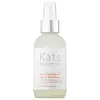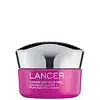What's inside
What's inside
 Key Ingredients
Key Ingredients

 Benefits
Benefits

 Concerns
Concerns

 Ingredients Side-by-side
Ingredients Side-by-side

Water
Skin ConditioningPelargonium Graveolens Flower/Leaf/Stem Water
MaskingLactic Acid
BufferingSodium Hydroxide
BufferingGlycolic Acid
BufferingPropanediol
SolventPhytic Acid
Glycerin
HumectantPapain
Skin ConditioningBoswellia Serrata Extract
Skin ConditioningMel Extract
MoisturisingCamellia Sinensis Leaf Extract
AntimicrobialAspalathus Linearis Extract
Skin ConditioningBromelain
Skin ConditioningMicrocitrus Australasica Fruit Extract
Tetrapeptide-14
Skin ConditioningLactobacillus/Pumpkin Fruit Ferment Filtrate
Skin ConditioningLeuconostoc/Radish Root Ferment Filtrate
Antimicrobial1,2-Hexanediol
Skin ConditioningButylene Glycol
HumectantCitric Acid
BufferingMalic Acid
BufferingTartaric Acid
BufferingCaprylhydroxamic Acid
Phenoxyethanol
PreservativeSodium Benzoate
MaskingMaltodextrin
AbsorbentCitronellol
PerfumingGeraniol
PerfumingLinalool
PerfumingWater, Pelargonium Graveolens Flower/Leaf/Stem Water, Lactic Acid, Sodium Hydroxide, Glycolic Acid, Propanediol, Phytic Acid, Glycerin, Papain, Boswellia Serrata Extract, Mel Extract, Camellia Sinensis Leaf Extract, Aspalathus Linearis Extract, Bromelain, Microcitrus Australasica Fruit Extract, Tetrapeptide-14, Lactobacillus/Pumpkin Fruit Ferment Filtrate, Leuconostoc/Radish Root Ferment Filtrate, 1,2-Hexanediol, Butylene Glycol, Citric Acid, Malic Acid, Tartaric Acid, Caprylhydroxamic Acid, Phenoxyethanol, Sodium Benzoate, Maltodextrin, Citronellol, Geraniol, Linalool
Water
Skin ConditioningGlycolic Acid
BufferingPhytic Acid
Glyceryl Stearate
EmollientPEG-100 Stearate
Caprylic/Capric Triglyceride
MaskingGalactoarabinan
Dimethyl Isosorbide
SolventEthoxydiglycol
HumectantNeopentyl Glycol Diethylhexanoate
EmollientSodium Hydroxide
BufferingStearyl Alcohol
EmollientPropanediol
SolventPolyacrylate Crosspolymer-6
Emulsion StabilisingGlycerin
HumectantMaltodextrin
AbsorbentOryza Sativa Bran Extract
Skin ConditioningCitrus Paradisi Peel Oil
MaskingRosmarinus Officinalis Leaf Oil
MaskingSodium Ascorbate
AntioxidantRetinol
Skin ConditioningHelianthus Annuus Seed Extract
Skin ConditioningRosmarinus Officinalis Leaf Extract
AntimicrobialMicrocitrus Australasica Fruit Extract
Citrus Aurantifolia Oil
CleansingCitrus Aurantium Dulcis Peel Oil
MaskingMentha Piperita Oil
MaskingEucalyptus Globulus Leaf Oil
PerfumingAllantoin
Skin ConditioningBromelain
Skin ConditioningPapain
Skin ConditioningTocopherol
AntioxidantDimethicone
EmollientPolymethylsilsesquioxane
Vanillyl Butyl Ether
MaskingEthylhexylglycerin
Skin ConditioningHdi/Trimethylol Hexyllactone Crosspolymer
Xanthan Gum
EmulsifyingDisodium EDTA
Benzyl Alcohol
PerfumingMenthoxypropanediol
MaskingLimonene
PerfumingLinalool
PerfumingCitral
PerfumingWater, Glycolic Acid, Phytic Acid, Glyceryl Stearate, PEG-100 Stearate, Caprylic/Capric Triglyceride, Galactoarabinan, Dimethyl Isosorbide, Ethoxydiglycol, Neopentyl Glycol Diethylhexanoate, Sodium Hydroxide, Stearyl Alcohol, Propanediol, Polyacrylate Crosspolymer-6, Glycerin, Maltodextrin, Oryza Sativa Bran Extract, Citrus Paradisi Peel Oil, Rosmarinus Officinalis Leaf Oil, Sodium Ascorbate, Retinol, Helianthus Annuus Seed Extract, Rosmarinus Officinalis Leaf Extract, Microcitrus Australasica Fruit Extract, Citrus Aurantifolia Oil, Citrus Aurantium Dulcis Peel Oil, Mentha Piperita Oil, Eucalyptus Globulus Leaf Oil, Allantoin, Bromelain, Papain, Tocopherol, Dimethicone, Polymethylsilsesquioxane, Vanillyl Butyl Ether, Ethylhexylglycerin, Hdi/Trimethylol Hexyllactone Crosspolymer, Xanthan Gum, Disodium EDTA, Benzyl Alcohol, Menthoxypropanediol, Limonene, Linalool, Citral
 Reviews
Reviews

Alternatives
Ingredients Explained
These ingredients are found in both products.
Ingredients higher up in an ingredient list are typically present in a larger amount.
We don't have a description for Bromelain yet.
Glycerin is already naturally found in your skin. It helps moisturize and protect your skin.
A study from 2016 found glycerin to be more effective as a humectant than AHAs and hyaluronic acid.
As a humectant, it helps the skin stay hydrated by pulling moisture to your skin. The low molecular weight of glycerin allows it to pull moisture into the deeper layers of your skin.
Hydrated skin improves your skin barrier; Your skin barrier helps protect against irritants and bacteria.
Glycerin has also been found to have antimicrobial and antiviral properties. Due to these properties, glycerin is often used in wound and burn treatments.
In cosmetics, glycerin is usually derived from plants such as soybean or palm. However, it can also be sourced from animals, such as tallow or animal fat.
This ingredient is organic, colorless, odorless, and non-toxic.
Glycerin is the name for this ingredient in American English. British English uses Glycerol/Glycerine.
Learn more about GlycerinGlycolic Acid is arguably the most famous alpha hydroxy acid (AHA) with tons of research backing its benefits.
It is found naturally in sugar cane but the form used in skincare is usually synthetic for purity and stability.
Glycolic acid removes the top layer of dead skin cells to allow newer and fresher ones to emerge.
AHAs work by breaking down the structural “glue” that holds old skin cells in place. When that buildup is gone, your skin can renew itself more efficiently.
Research also shows glycolic acid stimulates collagen production, helping to firm and thicken the skin over time. This is one of its biggest advantages over other AHAs.
Overall, glycolic acid helps with:
Fun fact: Glycolic acid boosts skin hydration by helping it produce molecules that increase hyaluronic acid naturally.
To work best, glycolic acid products should have a pH between 3-4 (that’s where exfoliation is most effective but still gentle on skin).
The pH and concentration of a product are key to its effectiveness:
It is normal to feel a slight stinging sensation when using glycolic acid. This usually fades as your skin adjusts.
Because glycolic acid has the smallest molecular size in the AHA family, it can penetrate deeper, which enhances its effectiveness but also makes it more likely to irritate sensitive skin.
If your skin is very sensitive or prone to rosacea, glycolic acid may be too strong; in that case, try milder options like lactic acid or a PHA instead.
Recent studies suggest glycolic acid might even help protect against UV damage. But don’t skip sunscreen! Freshly exfoliated skin is more sensitive to the sun.
Glycolic acid is a skincare superstar. It smooths, brightens, hydrates, and firms the skin. Unless you’re highly sensitive, it’s well worth adding to your routine.
Read more about some other popular AHA's here:
Learn more about Glycolic AcidLinalool is a fragrance and helps add scent to products. It's derived from common plants such as cinnamon, mint, citrus, and lavender.
Like Limonene, this ingredient oxidizes when exposed to air. Oxidized linalool can cause allergies and skin sensitivity.
This ingredient has a scent that is floral, spicy tropical, and citrus-like.
Learn more about LinaloolMaltodextrin is a polysaccharide. It is derived from starch such as rice, corn, wheat, or potato starch.
In food, Maltodextrin is used to improve the texture and thicken a product. Due to its structure, it can help create a gel texture. As an emulsion stabilizer, it helps keep the ingredients in a product together.
As a polysaccharide, Maltodextrin has moisturizing properties. Polysaccharides are a type of carbohydrate. The top layer of skin uses polysaccharides to retain water, keeping the skin hydrated.
Maltodextrin is water soluble and has a sweet taste.
Learn more about MaltodextrinWe don't have a description for Microcitrus Australasica Fruit Extract yet.
Papain is an enzyme found naturally in the papaya plant's leaves, fruit, and roots. It has antimicrobial, soothing, and wound healing properties.
Glycine and Vitamin A are naturally found in papain.
While papain is often touted as skin-lightening, further studies are needed to prove this. However, papain has been shown to help soothe acne-inflammation.
Papain belongs to a class of enzymes called proteolytic enzymes. These enzymes break down peptides and amino acids.
Some studies found papain to be a potential skin sensitizer and allergen. Those with latex allergies might also be allergic to papaya.
Learn more about PapainPhytic Acid is a gentle AHA and antioxidant. AHAs are chemical exfoliants that help remove dead skin cells. Phytic Acid has a slight and mild exfoliating effect.
The chemical makeup makes it classified as an AHA, much like lactic acid.
In some cases, it is a chelating agent. Chelating agents help prevent metals from binding to water, helping to stabilize the ingredients in a product.
An interesting fact about phytic acid is that it is considered an antinutrient. People do not have the enzyme needed to properly breakdown and digest phytic acid. When ingested, phytic acid binds to minerals and prevents them from being absorbed.
Read more about some other popular AHA's here:
Learn more about Phytic AcidPropanediol is an all-star ingredient. It softens, hydrates, and smooths the skin.
It’s often used to:
Propanediol is not likely to cause sensitivity and considered safe to use. It is derived from corn or petroleum with a clear color and no scent.
Learn more about PropanediolSodium Hydroxide is also known as lye or caustic soda. It is used to adjust the pH of products; many ingredients require a specific pH to be effective.
In small amounts, sodium hydroxide is considered safe to use. However, large amounts may cause chemical burns due to its high alkaline.
Your skin has a natural pH and acid mantle. This acid mantle helps prevent harmful bacteria from breaking through. The acid mantle also helps keep your skin hydrated.
"Alkaline" refers to a high pH level. A low pH level would be considered acidic.
Learn more about Sodium HydroxideWater. It's the most common cosmetic ingredient of all. You'll usually see it at the top of ingredient lists, meaning that it makes up the largest part of the product.
So why is it so popular? Water most often acts as a solvent - this means that it helps dissolve other ingredients into the formulation.
You'll also recognize water as that liquid we all need to stay alive. If you see this, drink a glass of water. Stay hydrated!
Learn more about Water